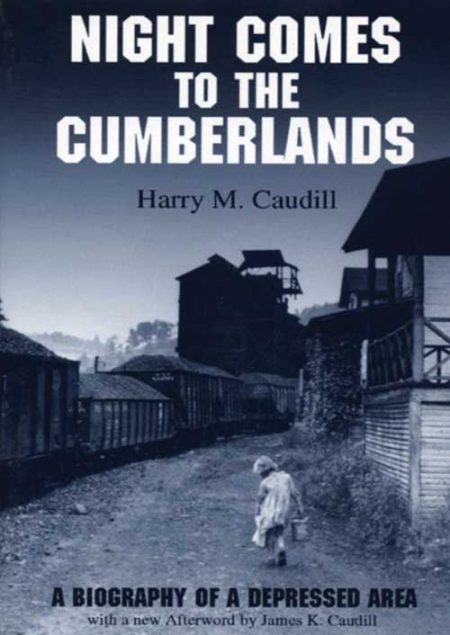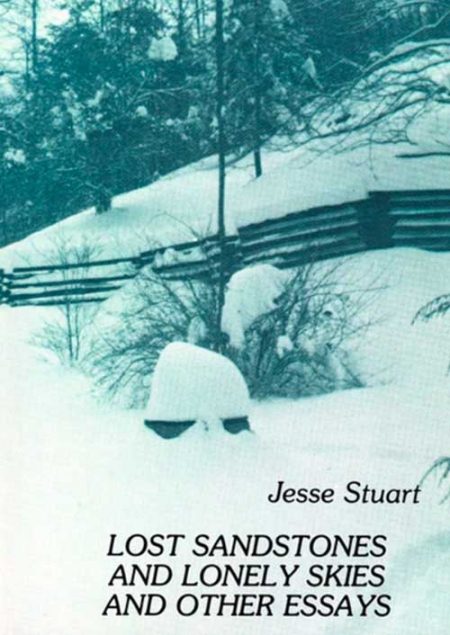-
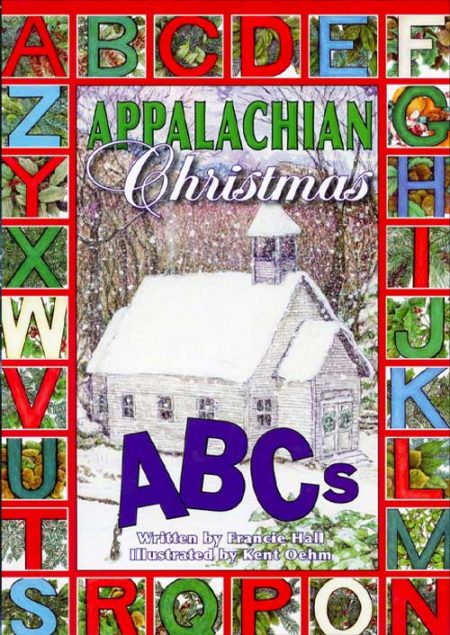 Laced throughout the litany of letters on this celebratory alphabet book is the meaning of Christmas with an Appalachian twist. Exploring the whimsy and worship of Yuletide in the mountains, each letter captures a glimpse of the traditions, food, and frolicking shared by family and friends. Incorporating a legend about the animals around the manger, a program with angels announcing God's glory, and choirs softly singing carols, this A-to-Z book for all ages will become a new Christmas tradition for families who gather around the tree each December. By Francie Hall Illustrated by Kent Oehm
Laced throughout the litany of letters on this celebratory alphabet book is the meaning of Christmas with an Appalachian twist. Exploring the whimsy and worship of Yuletide in the mountains, each letter captures a glimpse of the traditions, food, and frolicking shared by family and friends. Incorporating a legend about the animals around the manger, a program with angels announcing God's glory, and choirs softly singing carols, this A-to-Z book for all ages will become a new Christmas tradition for families who gather around the tree each December. By Francie Hall Illustrated by Kent Oehm -
 Traveling The Underground Railroad: A Visitor's Guide to More Than 300 Sites describes current private homes, churches, restaurants, and halls in the United States and Canada that once served as Underground Railroad sites, and includes contact information for tourism offices and historical societies. SOFTBACK VERSION By Bruce Chadwick
Traveling The Underground Railroad: A Visitor's Guide to More Than 300 Sites describes current private homes, churches, restaurants, and halls in the United States and Canada that once served as Underground Railroad sites, and includes contact information for tourism offices and historical societies. SOFTBACK VERSION By Bruce Chadwick -
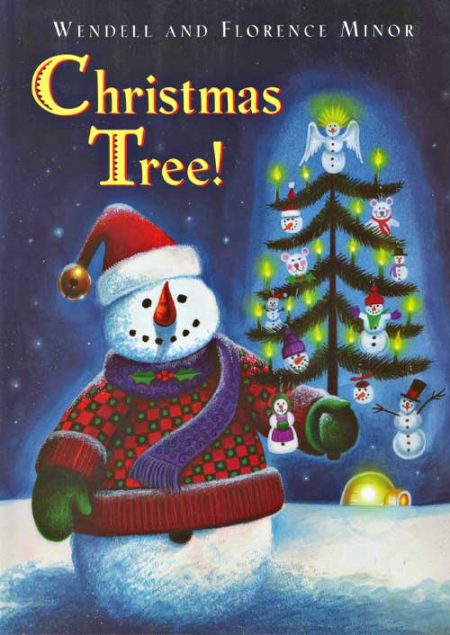 If you were a Christmas tree, what kind of tree would you be? A mighty tree or a tiny tree? A city tree or a country tree? A tree with curious features or a tree made just for creatures? Voyaging from cities to plains and in renderings of things miniature to grand, Wendell and Florence Minor lead young readers on an imaginative journey across America in tribute to one of our most beloved symbols — the Christmas tree. By Wendell and Florence Minor
If you were a Christmas tree, what kind of tree would you be? A mighty tree or a tiny tree? A city tree or a country tree? A tree with curious features or a tree made just for creatures? Voyaging from cities to plains and in renderings of things miniature to grand, Wendell and Florence Minor lead young readers on an imaginative journey across America in tribute to one of our most beloved symbols — the Christmas tree. By Wendell and Florence Minor -
 Lauren Gabriel spent many years of her childhood in foster homes, wishing her mother would come back for her and be the family she needs. Now twenty-years-old, she still longs for a place that she can truly call home. Her work as a cashier is unfulfilling, and at Christmas it’s unbearable with the songs and carols and chatter of Christmas that she hears throughout the day. By Donna VanLiere
Lauren Gabriel spent many years of her childhood in foster homes, wishing her mother would come back for her and be the family she needs. Now twenty-years-old, she still longs for a place that she can truly call home. Her work as a cashier is unfulfilling, and at Christmas it’s unbearable with the songs and carols and chatter of Christmas that she hears throughout the day. By Donna VanLiere -
 How to Build Your Dream Cabin in the Woods: The Ultimate Guide to Building and Maintaining a Backcountry Getaway This ultimate resource includes photos, blueprints, and diagrams, and covers the steps to constructing the cabin you've always wanted such as:
How to Build Your Dream Cabin in the Woods: The Ultimate Guide to Building and Maintaining a Backcountry Getaway This ultimate resource includes photos, blueprints, and diagrams, and covers the steps to constructing the cabin you've always wanted such as:- Selecting a site
- Gathering construction materials
- Deciding on a design that is right for you
- Managing your property
- Building add-ons, including shooting ranges, an outhouse, or an outside fire ring
- Installing cabin security
- And more!
-
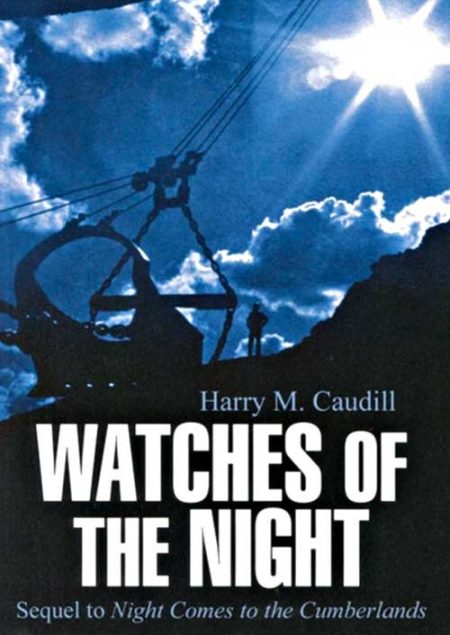 In 1963, Harry M. Caudill published his now classic account of the reckless, deliberate despoliation of the Appalachian Plateau, Night Comes to the Cumberlands. Thirteen years later, in The Watches of the Night, Caudill continued the heartbreaking story of an incredibly rich land inhabited by a grindingly poor people whose problems, despite state and local aid and an unprecedented boom in coal, had worsened: the land was being stripped more rapidly than ever; the people’s traditional relationship with the land was being uprooted, and their old customs eliminated by standardization Both a narrative history and a polemic against greed and waste, The Watches of the Night hammers at “the profligacy growing out of the persistent myth of superabundance.” The author ponders an even darker future if the cycle of boom and bust is not broken. He writes: “Americans have never understood or respected the finely textured, little-hill terrain of the Cumberland Plateau.” Neither the farmers nor the miners who followed the early pioneers saw it as a place cherish. Through decades that have lengthened to nearly two centuries the land has fought back, sometimes with savage floods and always with persistent efforts to reforest. “But now times runs out and our “inexhaustible” resources have turned finite….The Kentucky Cumberlands are many things, but most of all they are a warning.” By Harry M. Caudill
In 1963, Harry M. Caudill published his now classic account of the reckless, deliberate despoliation of the Appalachian Plateau, Night Comes to the Cumberlands. Thirteen years later, in The Watches of the Night, Caudill continued the heartbreaking story of an incredibly rich land inhabited by a grindingly poor people whose problems, despite state and local aid and an unprecedented boom in coal, had worsened: the land was being stripped more rapidly than ever; the people’s traditional relationship with the land was being uprooted, and their old customs eliminated by standardization Both a narrative history and a polemic against greed and waste, The Watches of the Night hammers at “the profligacy growing out of the persistent myth of superabundance.” The author ponders an even darker future if the cycle of boom and bust is not broken. He writes: “Americans have never understood or respected the finely textured, little-hill terrain of the Cumberland Plateau.” Neither the farmers nor the miners who followed the early pioneers saw it as a place cherish. Through decades that have lengthened to nearly two centuries the land has fought back, sometimes with savage floods and always with persistent efforts to reforest. “But now times runs out and our “inexhaustible” resources have turned finite….The Kentucky Cumberlands are many things, but most of all they are a warning.” By Harry M. Caudill -
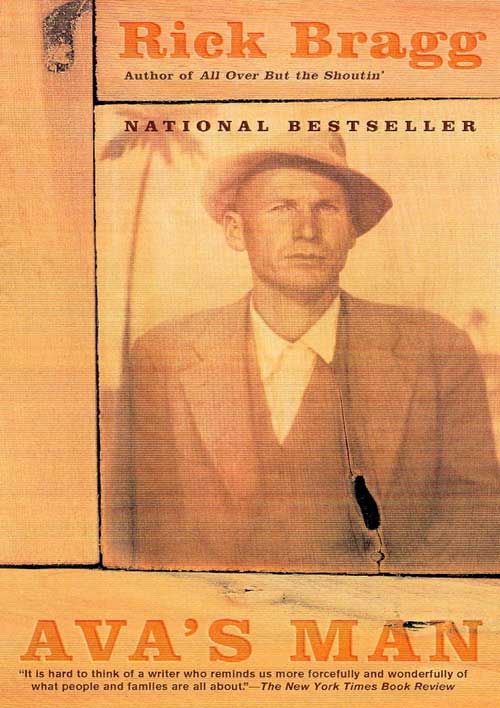 With the same emotional generosity and effortlessly compelling storytelling that made All Over But the Shoutin’ a beloved bestseller, Rick Bragg continues his personal history of the Deep South. This time he’s writing about his grandfather Charlie Bundrum, a man who died before Bragg was born but left an indelible imprint on the people who loved him. Drawing on their memories, Bragg reconstructs the life of an unlettered roofer who kept food on his family’s table through the worst of the Great Depression; a moonshiner who drank exactly one pint for every gallon he sold; an unregenerate brawler, who could sit for hours with a baby in the crook of his arm. In telling Charlie’s story, Bragg conjures up the backwoods hamlets of Georgia and Alabama in the years when the roads were still dirt and real men never cussed in front of ladies. A masterly family chronicle and a human portrait so vivid you can smell the cornbread and whiskey, Ava’s Man is unforgettable. SOFTBACK VERSION (259 PAGES) Rick Bragg
With the same emotional generosity and effortlessly compelling storytelling that made All Over But the Shoutin’ a beloved bestseller, Rick Bragg continues his personal history of the Deep South. This time he’s writing about his grandfather Charlie Bundrum, a man who died before Bragg was born but left an indelible imprint on the people who loved him. Drawing on their memories, Bragg reconstructs the life of an unlettered roofer who kept food on his family’s table through the worst of the Great Depression; a moonshiner who drank exactly one pint for every gallon he sold; an unregenerate brawler, who could sit for hours with a baby in the crook of his arm. In telling Charlie’s story, Bragg conjures up the backwoods hamlets of Georgia and Alabama in the years when the roads were still dirt and real men never cussed in front of ladies. A masterly family chronicle and a human portrait so vivid you can smell the cornbread and whiskey, Ava’s Man is unforgettable. SOFTBACK VERSION (259 PAGES) Rick Bragg -
 As early as 1654, English and French explorers in the southern Appalachians reported seeing dark-skinned, brown- and blue-eyed, and European-featured people speaking broken Elizabethan English, living in cabins, tilling the land, smelting silver, practicing Christianity, and, most perplexing of all, claiming to be Portyghee. Declared free persons of color in the late 1700s by the English and Scottish-Irish immigrants, the Melungeons, as they were known, were driven off their lands and denied voting rights, education, and the right to judicial process. The law was enforced mercilessly and sometimes violently in the resoundingly successful effort to totally disenfranchise these earliest American settlers. SOFTBACK VERSION By Brent Kennedy
As early as 1654, English and French explorers in the southern Appalachians reported seeing dark-skinned, brown- and blue-eyed, and European-featured people speaking broken Elizabethan English, living in cabins, tilling the land, smelting silver, practicing Christianity, and, most perplexing of all, claiming to be Portyghee. Declared free persons of color in the late 1700s by the English and Scottish-Irish immigrants, the Melungeons, as they were known, were driven off their lands and denied voting rights, education, and the right to judicial process. The law was enforced mercilessly and sometimes violently in the resoundingly successful effort to totally disenfranchise these earliest American settlers. SOFTBACK VERSION By Brent Kennedy -
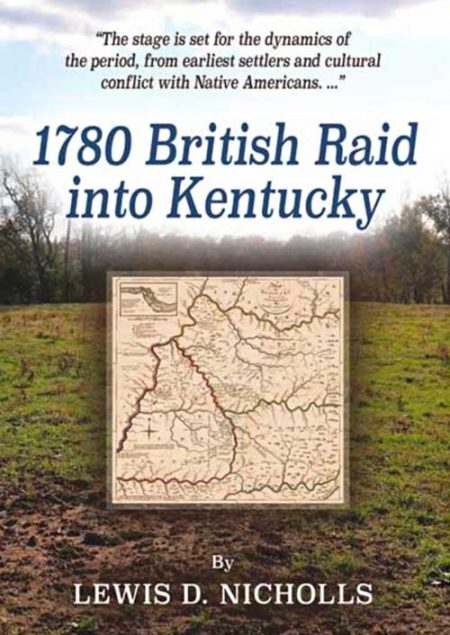 In 1780, the British launched a raid into Kentucky led by Captain Henry Bird to assist the Native Americans to reclaim their hunting grounds from white settlers. The raid targeted Kentucky's Ruddell's Fort and Martin's Station and captured approximately 350 white settlers comprised of men, women, and children. On June 26, 1780, the British and Native Americans marched the captives to Detroit on a 50-day march under brutal conditions, killing several of them along the way. The British marched 129 of these settlers, who were eventually released after the war of escaped. The remaining settlers held by the Native Americans were sold into slavery, adopted into a tribe, sold or eventually released. SOFTBACK VERSION Lewis D. Nicholls
In 1780, the British launched a raid into Kentucky led by Captain Henry Bird to assist the Native Americans to reclaim their hunting grounds from white settlers. The raid targeted Kentucky's Ruddell's Fort and Martin's Station and captured approximately 350 white settlers comprised of men, women, and children. On June 26, 1780, the British and Native Americans marched the captives to Detroit on a 50-day march under brutal conditions, killing several of them along the way. The British marched 129 of these settlers, who were eventually released after the war of escaped. The remaining settlers held by the Native Americans were sold into slavery, adopted into a tribe, sold or eventually released. SOFTBACK VERSION Lewis D. Nicholls -
Out of stock
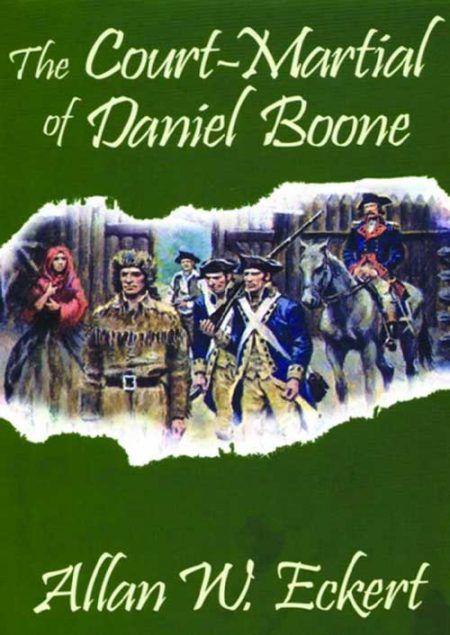 This young adult historical novel is based on an exciting and little known incident in the life of the famed Kentucky frontiersman Daniel Boone when, after being captured by Shawnee Indians and subsequently adopted into their tribe, he then escapes and returns to Boonesboro, only to find himself charged with treason and court-martialed. In a brilliant display of ability, Boone defends himself at the trial and gradually the truth about what really happened emerges. A fascinating glimpse of Kentucky's pioneer period as well as a penetrating look at frontier courtroom justice. By Allan Eckert
This young adult historical novel is based on an exciting and little known incident in the life of the famed Kentucky frontiersman Daniel Boone when, after being captured by Shawnee Indians and subsequently adopted into their tribe, he then escapes and returns to Boonesboro, only to find himself charged with treason and court-martialed. In a brilliant display of ability, Boone defends himself at the trial and gradually the truth about what really happened emerges. A fascinating glimpse of Kentucky's pioneer period as well as a penetrating look at frontier courtroom justice. By Allan Eckert


